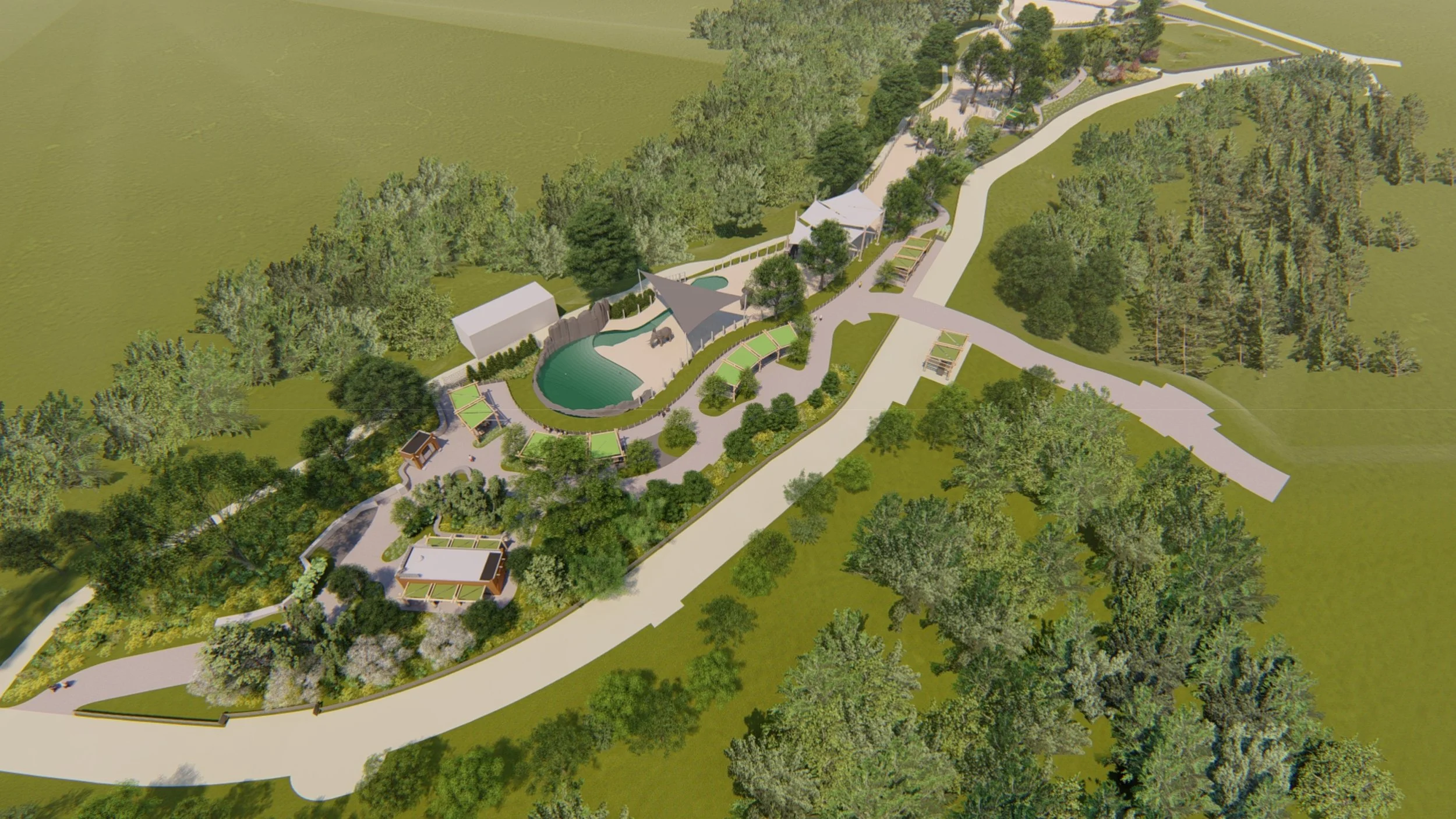The Kansas City Zoo Elephant Exhibit: How JBC Optimized Views, Circulation, and Soils for an Enhanced Visitor Experience
/The Kansas City Zoo Elephant Exhibit project focused on creating an engaging landscape for visitors while enhancing habitat quality and preserving the site’s valuable heritage trees. JBC contributed to landscape design for spectator circulation and social gathering areas, providing pavement layouts, soils, irrigation, and site amenities. The design emphasized optimal viewpoints and vantage points, allowing visitors to experience the exhibit while maintaining a safe yet enjoyable separation from the elephants.
JBC collaborated closely with PGAV Architects, the primary architectural firm, and SK Design Group, Inc., who handled civil engineering. JBC's design process included early visualizations and animations to help guide design decisions and communicate the experience of the space before development of construction drawings. Circulation patterns for both pedestrians and the tram system were carefully planned to maximize efficiency, comfort, and safety while enhancing the social gathering areas overlooking the exhibit.
One critical aspect of the project was soil design. A unique challenge involved incorporating elephant manure as an organic amendment in the soil mix, balancing nutrient content to support plant health without risking nitrogen burn. Repeated soil testing ensured the proper recipe, resulting in thriving plants and earlier establishment than anticipated. JBC also conducted a tree preservation study to protect heritage trees and developed a low-maintenance native plant palette that would serve as both a foreground and a buffer for visitors.
Construction coordination was another challenge, as the zoo remained open throughout the process. JBC worked with the project team to design temporary circulation paths and ensure visitor safety while maintaining construction efficiency. The exhibit’s vantage points, pedestrian circulation, and social gathering areas received overwhelmingly positive feedback from visitors, enhancing the overall zoo experience.
By combining innovative soils design, low-maintenance planting strategies, and thoughtfully engineered circulation patterns, the project successfully integrated visitor experience with sustainable landscape practices. The Kansas City Zoo Elephant Exhibit stands as a model for how technical expertise and creative design can enhance both ecological and social outcomes within a public space.






